The Business of Fitness
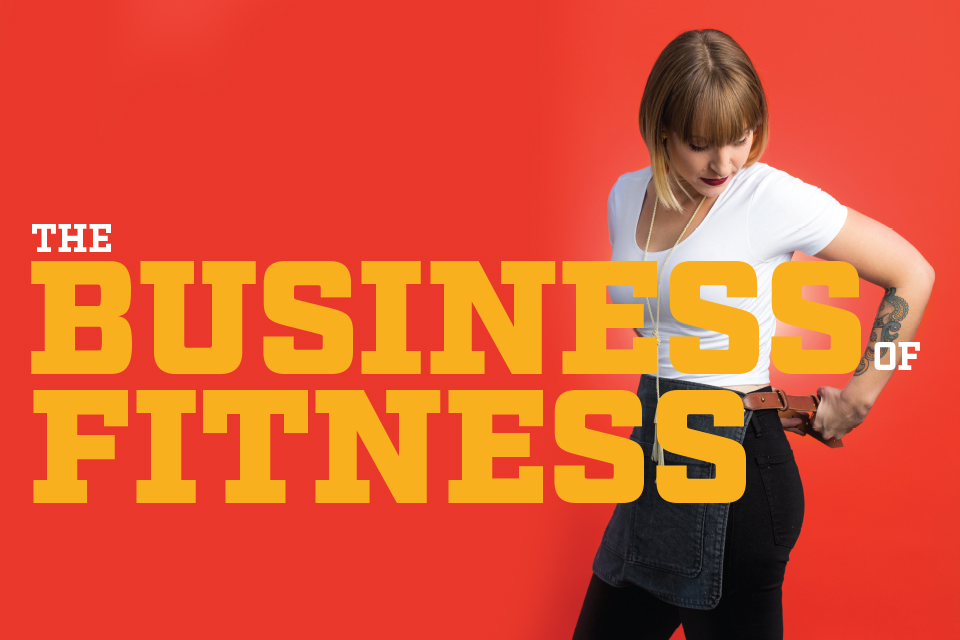
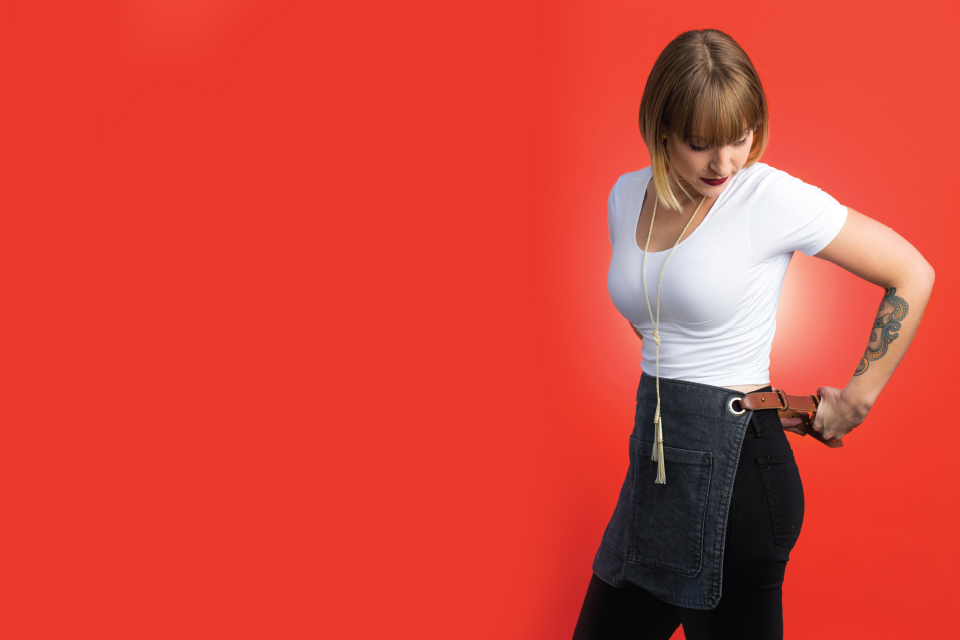
Naomi Seifter | Photography by Brian Fitzsimmons
Picnik
By Gretchen Goswitz
At the time of our interview, Naomi Seifter is eliminating all forms of avocado from her diet. She’s not trying to drop weight or fuel for an athletic event—she’s just trying to feel better. It’s seemingly odd, considering avocados are nutrient-dense and generally contribute to good digestive health. That, and Seifter’s restaurant Picnik cooks most of its food with avocado oil. We’re dining in at Picnik’s brick-and-mortar restaurant, where she orders a simple lunch plate of salmon and collard greens cooked in coconut oil (the second most commonly used oil in their kitchen). The waitress doesn’t hesitate to make note of the modifications. It’s not because Seifter is the owner or held exclusive to special treatment. This is just the glory of Picnik’s culinary point of view—ready to cater to all requests sans judgment or inconvenience.
“I’ve been seeing a medical intuitive because no matter what I tried I was still having reactions to stuff. She does readings specifically related to health and healing,” says Seifter, who has fought a lifelong battle of varying food sensitivities and intolerances. Her nutritional psychic has been able to pinpoint the exact foods in her diet that she would benefit from eliminating. “It’s been an incredible journey. Anytime I deviate from the plan is when I have issues.”
At her next session, the medical intuitive will identify a new set of foods that Seifter should remove, as well as which ones can be reintroduced. Not only does she follow this protocol rooted in trust and flexibility for her personal health, but it’s close to the way she runs her business. And if you’ve ever dined at her restaurant, stopped by the food trailers, or drank her bottled butter coffee, you know that this method is really working for her.
Billionaire Mark Cuban once famously said, “'Follow your passion' is easily the worst advice you could ever give or get.” As far as business acumen goes, his word carries some weight. Seifter, however—and her rapidly growing empire—is proving to be the exception.
“My biggest passion is divine intervention, and listening to the way I’m being led. My journey with business doesn’t feel like my own—it feels like I’m being guided,” she says. Any sense of a control is an illusion. With outside circumstances working on a timing of their own, Seifter acknowledges the best defense is to surrender attachment and accept the cosmic sign to reconfigure. In part, this is how Picnik began.
Before Seifter opened the flagship food trailer, her professional resume was chock full of restaurant experience, dating back to when she started working in the industry at the age of 16. Despite her relevant capabilities, plus a college degree in musical theatre (a study that groomed her to be personable and well-spoken), Seifter struggled to get work. “Starbucks wouldn’t interview me to be a barista. Whole Foods wouldn’t hire me as a cashier. Why did it take so much to get people to believe in me?” Seifter recalls.
Down but not defeated, she refused to let the proverbial closed doors shut her out completely. Seifter spent her early twenties preparing to open her own operation, originally a juice and coffee concept called Pressed and Squeezed. Close friends gave her honest opinions, saying the name was too complicated. Seifter also had difficulty dialing in on the branding, so she made the decision to change the plan. She had already locked into the location on 1700 S. Lamar Boulevard, and needed to act fast.
“I heard from multiple people that the space looked like a perfect place for a picnic,” she says. To skirt around trademark issues, she replaced the last ‘c’ with a ‘k’—and the Picnik food trailer was born.
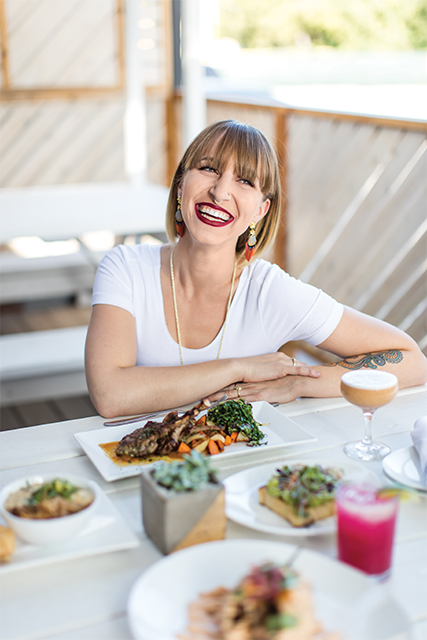 In true start-up fashion, Seifter faced unfamiliar territory, but had the grit and hustle to make it work. “I really started to learn how to cook after I opened Picnik,” she admits.
In true start-up fashion, Seifter faced unfamiliar territory, but had the grit and hustle to make it work. “I really started to learn how to cook after I opened Picnik,” she admits.
When she had to let go of Picnik’s two professional chefs due to financial constraints, she was left with no choice but to run the culinary side on her own. For eight months in 2014, Seifter changed the trailer’s food menu every day, openly accepting constructive criticism to hone in on what worked and what didn’t.
The vision constantly evolved in response to customer feedback. Picnik’s beginnings were more paleo food-focused with a stellar drink program—a menu unlike any other in town. As bone broth and butter coffee increased in popularity, Austin residents flocked to Picnik to get their daily cup with a dose of high quality fats. Because of this traction, Seifter repositioned the brand to be more like a healthy Starbucks.
Business was booming for Picnik, but Seifter still wasn’t satisfied. Most of the trailer’s food menu was grab-and-go from a refrigerator. “I became more disappointed in our inability to serve food I was really proud of. No matter how much you do, if you put it in a box and serve it cold, it’s only going to be so good,” Seifter says. The customer base Picnik had acquired was primarily comprised of people just like Seifter. They were on an elimination diet, looking to make modifications to meet different dietary needs; pre-packaged meals didn’t allow for flexibility. “The more I got into what the business was and what it stood for, I thought it was a missing component.”
Seifter’s mentor and Houston-based investor Cameron Smith urged her to make the move into the brick-and-mortar business. Knowing how displeased Seifter was with the food, Smith insisted that a restaurant under the Picnik name would add validity to the brand and establish Seifter as a trusted resource in the food space. Sure enough, when Picnik opened its doors on Burnet Road in Aug. 2016, Seifter and her team nailed the “real food, good vibes” philosophy it promised to deliver. Taking the guesswork out of safe, healthy, readily-accessible food was enough of an angle to fill the restaurant with hungry patrons. But above all, Seifter proved that delicious and nutritious were not mutually exclusive traits on Picnik’s 100 percent gluten, corn, peanut, and soy-free menu.
Meanwhile, Seifter had another project in the works—one that she had been working on long before the brick-and-mortar opened. Like most coffee shops, Seifter’s trailer gained a group of regulars who loyally loved her special brews. “We’d see them all the time and they’d say something like, ‘Hey I’m going to Dallas next week. What do I do about my coffee?’ We didn’t want to give away recipes, but it’s also a pain to travel with cocoa, butter, MCT oil, and all these messy ingredients,” she explains. So, she began working on a travel-friendly “butter coffee bomb.”
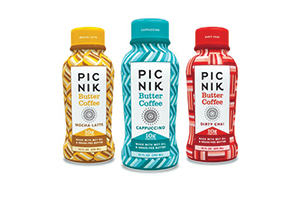 Unfortunately, the early iterations were riddled with stability and fragility issues. Seifter connected with a buyer at Whole Foods Market, who suggested she turn it into a bottled beverage, rather than a packaged coffee bomb like originally intended. It wasn’t as simple as using the classic recipes and bottling them up. To make a shelf-stable product, Seifter and her team were essentially tasked with the job of blending oil and water—or rather, coffee and butter.
Unfortunately, the early iterations were riddled with stability and fragility issues. Seifter connected with a buyer at Whole Foods Market, who suggested she turn it into a bottled beverage, rather than a packaged coffee bomb like originally intended. It wasn’t as simple as using the classic recipes and bottling them up. To make a shelf-stable product, Seifter and her team were essentially tasked with the job of blending oil and water—or rather, coffee and butter.
After taking a cue from the universe’s intervention and making the product’s first notable pivot—changing the name from Blue Northern to Picnik—Seifter thought she was heading in a positive direction. But when the team attended Natural Products Expo West, among approximately 3,000 exhibitors and over 60,000 attendees, the bottled butter coffee didn’t hold up well. “The product was frozen solid. I just didn’t want to compromise our mission by adding chemicals.” It was a similar experience when they were expected to deliver to Whole Foods Market stores. Yet again, it arrived frozen and never saw a moment on the shelves. Seifter eventually increased the budget to invest in a top-notch food scientist. If this scientist were to be something of a fairy godmother, one might say Picnik’s bottled butter coffee played out like a true Cinderella story. Once they perfected the recipe, every regional buyer at Whole Foods Markets across the country picked it up for the stores—a rarity for new consumer packaged goods.
The Picnik brand encountered some typical trial-and-error moments since its creation in 2013, while Seifter dealt with unique growing pains of her own, especially being a young entrepreneur. “I started the company when I was 24. When I first started looking at investment opportunities, I felt like people didn’t take me seriously. A lot of people think only experience is the precursor to success,” Seifter says. Her results soon became something that couldn’t be disputed.
Nowadays, Seifter notes that people are more surprised than doubtful. As a female restaurateur in a male-dominated industry, she hardly considers it an obstacle. Brought up by a mother who worked as a doctor, and learning from other women in early restaurant jobs, Seifter’s personal and professional life never felt limited by gender.
In Sept. 2017, Picnik opened a second food trailer in the St. Elmo District, anticipating the buzzing developments to come in the area. Growth won’t stop there, either.
Downtown Denver will welcome the state’s first Picnik store in 2018. Additionally, a small coffee shop through the Friends of 365 Program at a 365 by Whole Foods store will open in southern California.
“I get so excited about the restaurant because I think there are other markets in this country that would be appreciative of a Picnik. We’d still be sourcing from local purveyors, leaning on the local community, integrating people from that area. Even if it has more of a national presence, we want it to feel unique to every community we’re in,” Seifter says.
Can Picnik continue to conquer this market? All (divine) signs point to yes.
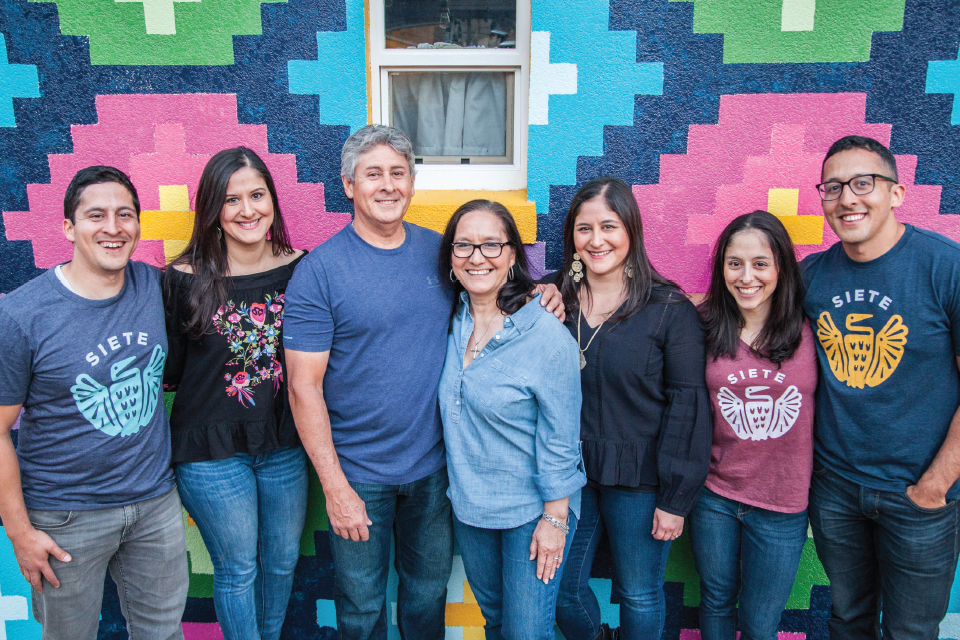
Siete Family Foods
By Laci Mosier
Veronica Garza and her brother Miguel, the founders of Siete Family Foods, never intended on starting a business. At 17 years old, Veronica was diagnosed with an autoimmune disorder that left her constantly tired and in pain. After years of struggling with symptoms, she learned that she also had a gluten allergy.
Her other brother, Rob, started doing some research to help. He learned that others in her situation had found success in adopting a grain-free diet. It was the hope she needed, but also meant that much of the food Veronica and her family grew up loving for generations was now off limits. As a Mexican-American, homemade flour tortillas were a staple for her and her family. She says eliminating them from her diet felt like not just losing a favorite food, but losing a part of her culture.
So she set to work finding an alternative. Over the next few years, she tinkered and experimented endlessly until she landed on an almond flour-based tortilla that was good. Really good. When her own grandmother declared, “These are really good. They’re better than mine,” Veronica knew she had a product she could very well sell.
In just a few short years, Siete Family Foods, went from a brand-less company with no logo and a zip-lock bag for packaging to becoming a popular foodie favorite. “When it comes to innovation we try not to focus on trends, but rather on solving problems,” says Veronica. Today, Siete has national distribution, a versatile and hugely successful product line, and continues to soar to the top of people’s shopping lists.
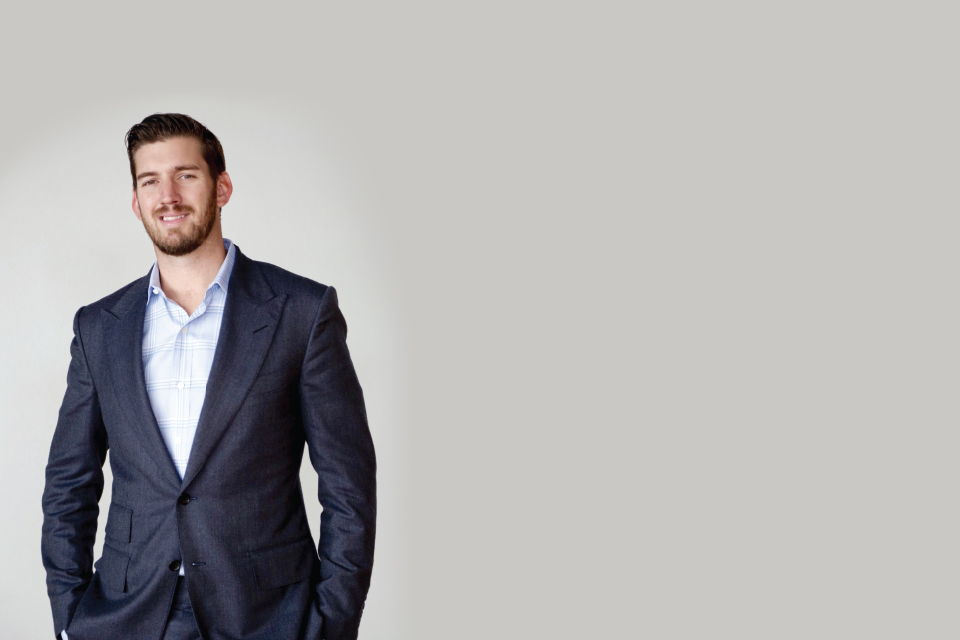
Doss Cunningham
Nutrabolt
By Laci Mosier
Shop the aisles or virtual shelves of any major retailer and you will almost certainly come across products from Nutrabolt—the sports nutrition category leader and creator of fitness fanatic-favorites C4 and XTEND.
With a sleek campus spanning 36,000 square feet, plus an additional 20,000 square foot state-of-the-art gym for employees, it’s hard to believe this leviathan company started out in a cramped and crowded duplex. “One bedroom was an ‘accounting office,’ another served as an ‘inventory staging and packing room.’ The living room was the sales pit with a sales desk on each of the three walls,” recalls Nutrabolt CEO, Doss Cunningham.
The duplex may have been small, but the ambition pumping inside was anything but. Lean, but impassioned, the crew helped steward the once scrappy startup into the global powerhouse it is today.
Although the duplex days are a distant memory, the core mission driving the original team has remained—“to support the journey of self-improvement and personal evolution of customers through sports and active nutrition products.” Doss says the company continues to evolve to meet customer needs and wants, and above all is “dedicated to becoming the best sports nutrition brand in the world.”
And as far as having an office in Austin? Doss says, “From the distinctive set of talent that has grown and resides here to the fitness culture that flourishes within it, Austin provides so many unique opportunities for us.”
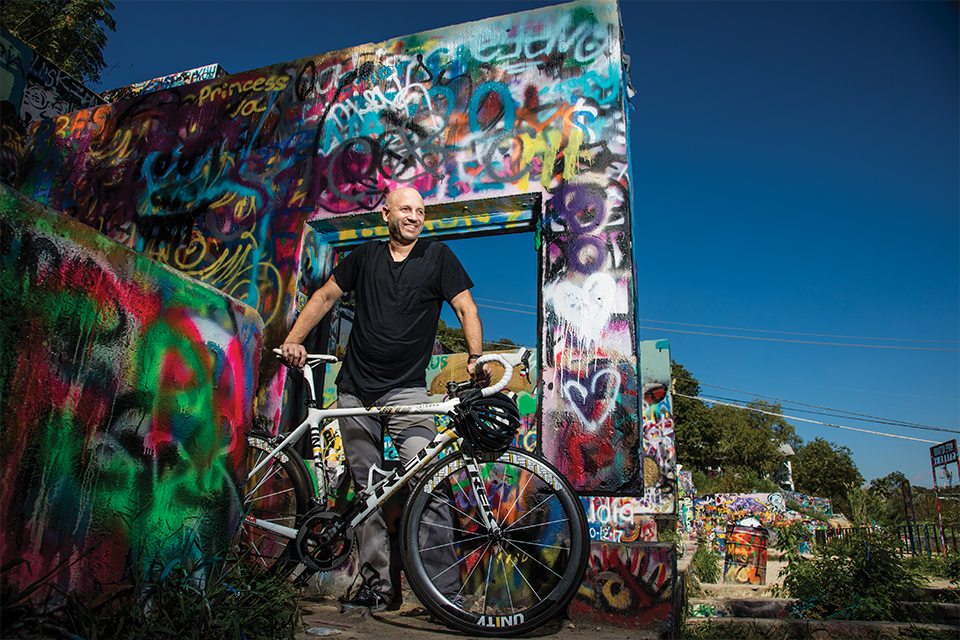
Kevin Brodwick, founder | photo by Brian Fitzsimmons
Thinksport
By Sommer Brugal
Since its founding in 2006, Thinksport has been recognized with many firsts: the first 100 percent BPA-free baby bottle, the first 100 percent BPA-free insulated sports bottle, and the first sunscreen to pass Whole Food Market’s premium care requirements.
Today, it continues to lead the alternative product industry with one of the largest assortments of safe products in the world, spanning from baby care to sporting goods to skin care.
Thinkbaby and Thinksport founder Kevin Brodwick originally became interested in alternative products while working with a biological testing lab focused on studying toxic chemicals in common consumer products.
“We saw that it didn’t matter where the product was made—they were all leaching harmful chemicals,” explained Brodwick. He says Thinkbaby and Thinksport were directly created to address that issue.
According to Brodwick, there are about 5,000 chemicals that behave like BPA. So while a sports bottle might be BPA-free, the likelihood of it containing other harmful chemicals remains high.
To avoid additional chemicals, Brodwick and his team use the precautionary principle. They look for those bad actors when creating new products to ensure it’s free of all harmful substances. He says he doesn’t want to “land on the next ‘gotcha’ chemical.”
Thinksport’s continuous growth is a testament to the demand for safer products. And while there’s ample opportunity to expand within the main segments of body care, sun care, and hydration, Brodwick says he’s committed to remaining true to the brand’s mission in doing so.
He plans to produce sustainable, chemical-free products while maintaining a strong focus on social responsibility.
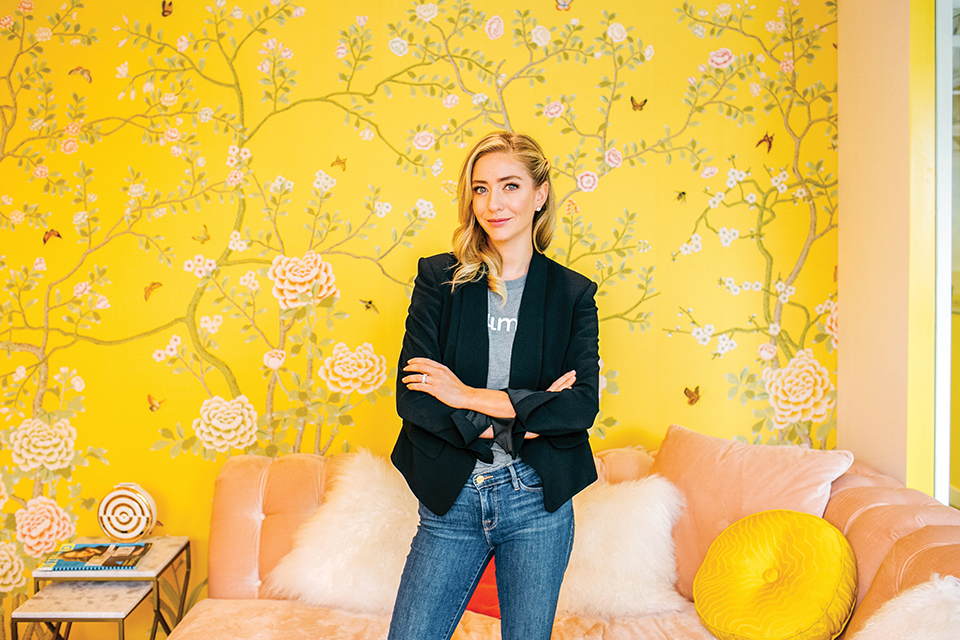
Whitney Wolfe Herd, CEO | photo by Kristen Kilpatrick
Bumble Bizz
By Laci Mosier
First came Bumble the dating app. Then came Bumble BFF, the friendship app. Next comes Bumble Bizz, the networking app.
The female-first networking approach is an extension of Bumble’s mission to empower women in myriad ways. The ever-evolving app continues to forge new territory, putting the balls (if you will), entirely in the lady’s court. The rules are simple—girl swipes right, guy swipes right, but only the girl can make the first move. It’s a whole new era of “ladies first.”
Just as Bumble turned the dating app industry on its head, Bumble Bizz is doing the same for professional networking, giving women the control to make the first move.
“We believe Bizz will help clear up the gray areas in networking that often make women feel uncomfortable—for example, receiving an unwanted message from a stranger on a professional platform,” says Bumble’s Head of Brand, Alex Williamson el-Effendi.
Similar to online dating, there is an imbalance in the gender dynamics of networking and Bizz is dedicated to changing that conversation. Alex says the idea for Bizz came from listening to users. “We believe current ways of networking are antiquated. Our goal is to give you the power to change your professional life from the palm of your hand. Every swipe is an opportunity to expand your network and make empowered career moves.”
Bumble’s corporate team found a match in this city, leading them to root down and build headquarters here. “We love Austin! It evokes a feeling of fearlessness,” she says. It’s a vibe that truly mirrors Bumble and its team.
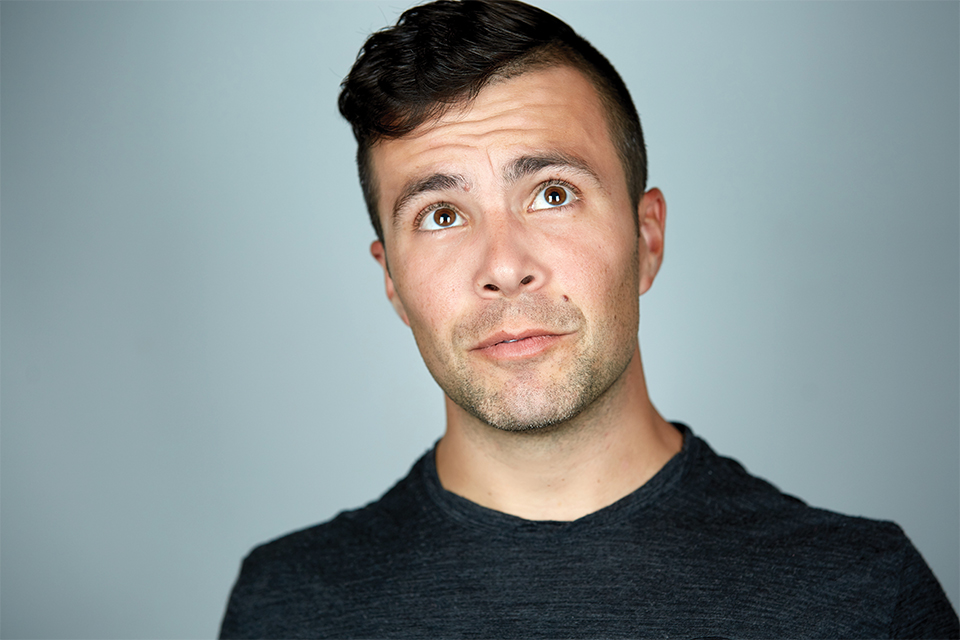
Peter Keller, founder and CEO | photo by Brian Flannery
FringeSport
By Sommer Brugal
FringeSport is leading the garage gym revolution, designing and manufacturing equipment from barbells to barbell plates to kettlebells, and supplying gyms like CrossFit boxes, micro gyms, and home gyms. Although the e-commerce business’ range spans far beyond Austin, the brand got its start much closer to home.
Peter Keller, founder and CEO of FringeSport, launched his career in the industry after realizing he wanted to help people better their lives through fitness. An active member in the CrossFit community at the time, Keller realized an opportunity within the market to do so.
Staying true to his goal, Keller focuses mainly on supporting individuals as they transform their home garage gyms and helping micro gym owners build standout facilities for their clients.
FringeSport aims to improve fitness gear and products on the market, but its strongest quality is the staff. Their dedication to the work they do, their passion for strength, and their willingness to support others reach their goals sets them apart in the industry.
“It’s not an official slogan, but it’s something [we] say a lot: We only sell what we lift on,” said Keller. He says FringeSport staff members only sell products they themselves would use during their personal fitness training routines.
When asked how FringeSport will continue to grow—continue to help more people live better lives—Keller says he plans to go beyond the product itself. He hopes to offer a sense of community, additional information and programming, and nutrition to a broader audience.
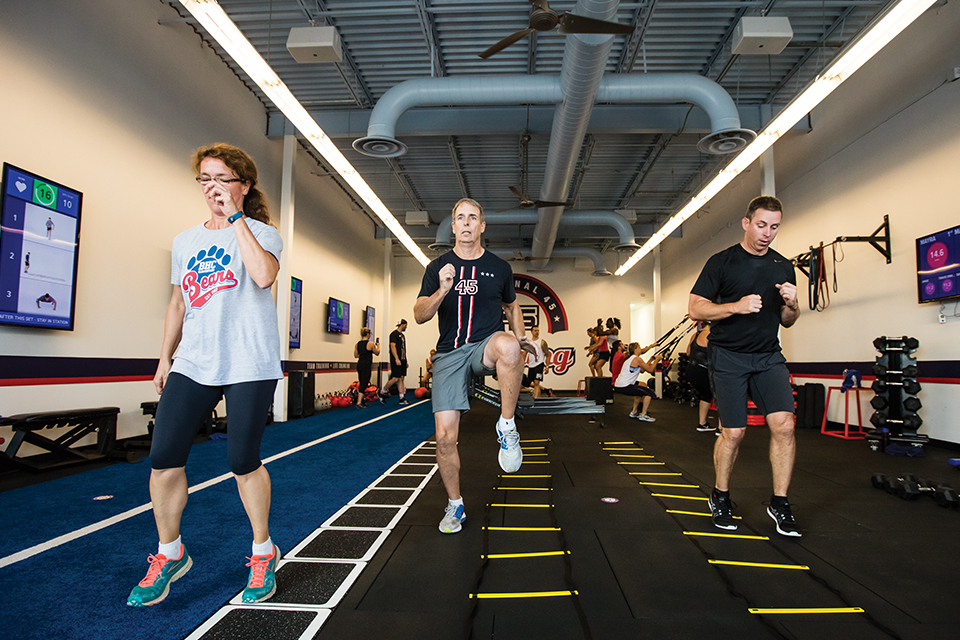
David Bohreer (middle) | photo by Brian Fitzsimmons
F45 Training
By Gretchen Goswitz
F45 Training isn’t just the next fitness fad—it’s already globally established, with over 750 franchises that span across more than 25 different countries. After becoming wildly popular in Australia, F45 Training expanded beyond its flagship’s borders and caught on quickly with residents in Hong Kong, India, Switzerland, Canada, and more. Now, it’s setting up shop in the United States, eager to prove it’s the fastest growing fitness franchise in the world for good reason.
Although F45 Training is seeing major success in America, David Bohreer is the franchisee responsible for bringing it to Austin. In his background of teaching martial arts, Bohreer valued the role functional training played in his students’ overall athleticism. It was enough to sway his decision to buy into a functional fitness franchise, and after some shopping around, he found the right one. While in Las Vegas,Bohreer dropped into an F45 Training spot and after two classes, he was sold on it. Austin’s first F45 Training facility—located in Four Points—opened its doors to the public in May 2017, and Bohreer is currently in the works of opening his second in Avery Ranch, while another franchisee prepares to launch in Westlake.
"I thought we’d see a trend [in clients] but we really haven't. I was told it could be for anybody and I really believe that. Anybody can do the workout because it can be scaled to modification,” Bohreer says.
While Ricky Martin, Russell Wilson, and Hugh Jackman are among the many clients that boast the benefits of F45 Training’s workouts, celebrity endorsement isn’t the only reason people get hooked. All classes adhere to a 45-minute time cap and a HIIT format that quickly moves through stations (as many as 54 different exercises) guided by monitors displaying respective movements. In an era that has seen an influx of programming, F45 Training showcases innovation that lead to undeniable results.

Patrick Hitchins, CEO and founder | photo by Brian Fitzsimmons
FitRankings
By Sommer Brugal
Let’s face it; we’ve all had a fitness wearable at some point. But only a few of us still have—and use—one today. FitRankings is aiming to change that.
Patrick Hitchins, CEO and founder of FitRankings, attributes the decline in wearables to most devices’ inability to evolve beyond simply tracking and checking user statistics. Mainly, though, he says they fall short in creating meaningful experiences.
According to Hitchins, FitRankings works to enable businesses and brands to leverage a space already full of fitness device wearers—to foster deeper connections between brands, their customers, and communities.
“For the individual person, they aren’t able to engage with their favorite local business [through their device].”
FitRankings, Hitchins says, enables individual companies to get involved.
“We offer businesses and organizations the tools they need to easily connect to all wearables and fitness apps, and create contextually meaningful experiences for users.”
FitRankings currently works with national and local brands alike, including American Heart Association, Saucony, and Business Journals. And while larger partners such as these can have a powerful impact using FitRankings, Hitchins hopes to make an impact on a smaller community level as well.
“Seeing us grow and gain relevance would [look like] your local coffee shop having the tools to run a basic [fitness] challenge that can engage their community from it, sell more coffee, and inspire people to move.”
Through FitRankings, Hitchins hopes people will dust off their wearable and connect with their favorite brands—and other individuals—through fitness.
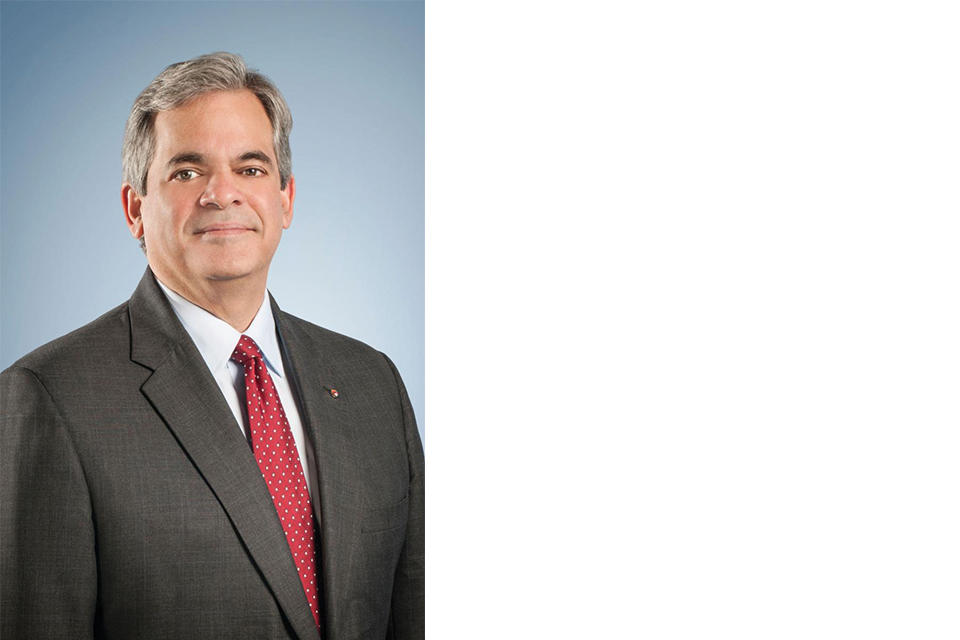
Austin Mayor Steve Adler
Mayor’s Health & Fitness Council
By Chelsea Bucklew
Taking health initiatives to the next level, Mayor Steve Adler and his Health and Fitness Council announced their Healthiest Workplace and School Awards for 2017 on Sept. 15 in hopes of improving health in the city of Austin. Workplaces and schools alike were rewarded for achieving exemplary status for implementing great health practices and promoting health and well-being in their everyday environments. Businesses such as Humana, Asuragen, Inc., Foundation Communities, 3M, and Seton Healthcare Family won Healthiest Workplace Awards as well as City of Austin and Capital Metro Transit Authority. Healthiest schools included Campbell Elementary, Cook Elementary, Murchison Elementary, and Dailey Middle School. Winners received $1,000 in grants to support ongoing health and wellness initiatives within their establishments.
The Mayor's Health and Fitness Council Partner Certification Program plans to include a variety of organizations come 2018 and currently includes businesses and schools of different calibers. The council bases their assessments on four pillars of health—tobacco-free living, physical activity, nutrition, health education and preventive services. This year, 37 workplaces fell under those guidelines.
The Council aims for Austin to be the healthiest and fittest community in America and has been reaching for this goal since 2004. The nonprofit's mission is to support and inspire people to improve their health by encouraging physical activity, improved nutrition, and tobacco-free living. By providing community connections, building alliances, and supporting the implementation of best health programs and practices, they wish to positively affect the community towards building healthy lifestyles.






